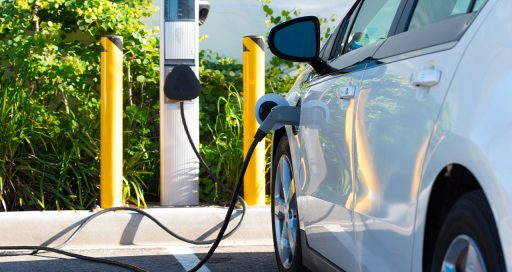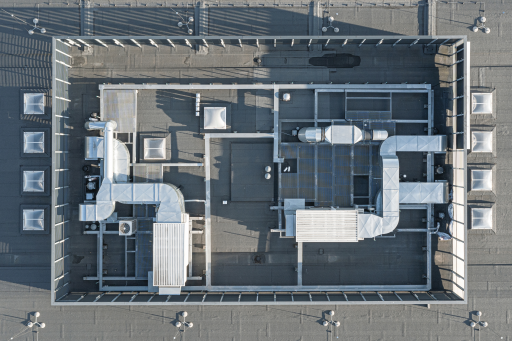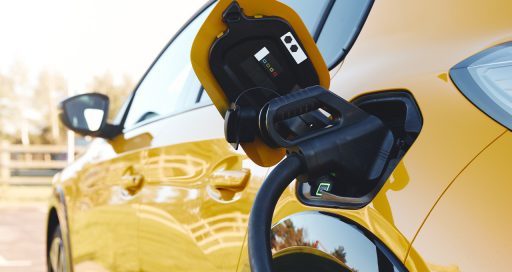How the construction industry is becoming a pioneer of electric mobility
Reading time: 5 min
The VINCI Group is testing and developing wireless charging technology under pilot schemes taking place in Germany. The electric road, a smart system for charging electric vehicles, is an innovation that could hit our roads within 5 to 10 years.
![]()
The European Union’s Sustainable and smart mobility strategy, a report published in December 2020, expects there to be 30 million electric vehicles (EVs) in operation in Europe by 2030. And Boston Consulting Group (BCG) estimates in a study entitled The Electric Car Tipping Point that EVs will have seized a third of the market in terms of global sales by 2025 and over half of it (51%) by 2030.
Suffice to say that electric mobility is no longer a figment of the imagination or even a far-off goal. For the promise to become a reality, rollout now depends on three major issues: battery production, the charging process and range.
As far as charging and range is concerned, an innovation that has undergone testing over the last few years is opening up promising prospects: the wireless electric road. Sweden paved the way back in 2019 by building the world’s first wireless charging road on the island of Gotland.
Using this technical solution, a vehicle can be powered without wires thanks to a sensor located on its underbody which “communicates” with electric coils embedded in the road surface. The charging process takes place between transmitter pads in the road and receiver pads in the vehicle by establishing a magnetic field and using it to transfer power.
Testing at advanced stage in Germany
In-road dynamic wireless charging for EVs is therefore no longer an illusion. Following on from Sweden, Germany is at an advanced stage of testing in the field. In April 2021, a 100m-long road section equipped with the charging technology was inaugurated in a bus station in Karlsruhe as part of a pilot scheme led by energy company EnBW (Energie Baden-Württemberg).
And a second project has been under way since January that involves installing the system on another 100m stretch of road, this time in Cologne, on the initiative of BASt (Bundesanstalt für Straßenwesen/Federal Highway Research Institute).
![]()
Three VINCI entities involved
The construction industry is thus becoming a pioneer of electric mobility. In this particular case, it was a VINCI Group solution that was selected in Germany for the two projects.
The goal is to build fully functional roads that enable EVs to be charged wirelessly while on the move.
The technology reduces battery size and consumption, increases range and shortens time spent at charging points. With this wireless charging system, which is compatible with all vehicle types and all road categories, several hundreds of metres of equipment can be installed in a single night.
Furthermore, a billing unit is connected to each receiving pad in vehicles to track how much electricity is captured.
Three VINCI Group subsidiaries, Omexom, Axians and Eurovia, two of which belong to VINCI Energies, are involved in these pilot schemes in partnership with the Technical University of Braunschweig, Volkswagen and ElectReon, the Israeli start-up behind the charging technology.
“Omexom is responsible for installing the power supply management unit and internet connection. Axians is handling the IT security for the integrated payment system in the vehicle receivers. And Eurovia and its subsidiary VIA IMC are planning and building the system as a whole and ensuring its stability,” explains Dirk Ebersbach, VIA IMC manager.
A tried and tested system
The main challenge has been to deliver system reliability. “We had to make sure that all the electronics embedded in the road don’t deteriorate over time or with adverse weather conditions. To do that, we performed numerous asphalt quality tests and opted for small trenches to bury the cables so as to limit the pressure on the electronic systems,” points out Ebersbach.
“We had to make sure that all the electronics embedded in the road don’t deteriorate over time or with adverse weather conditions.”
As regards the health impact of the radiation from the electrical systems, the VIA IMC manager provides reassurance that: “The system operates in off mode, which means that it is only activated and generates an electromagnetic field when a vehicle drives over the pads, lasting a few microseconds.”
All that remains is for a business model to be found that ensures the economic viability of the system. Will investment be provided by the public sector, the private sector or a combination of solutions? All this has yet to be resolved. But for Ebersbach, one thing is certain: wireless road charging will be a reality for us all within 5 to 10 years.
16/09/2021





